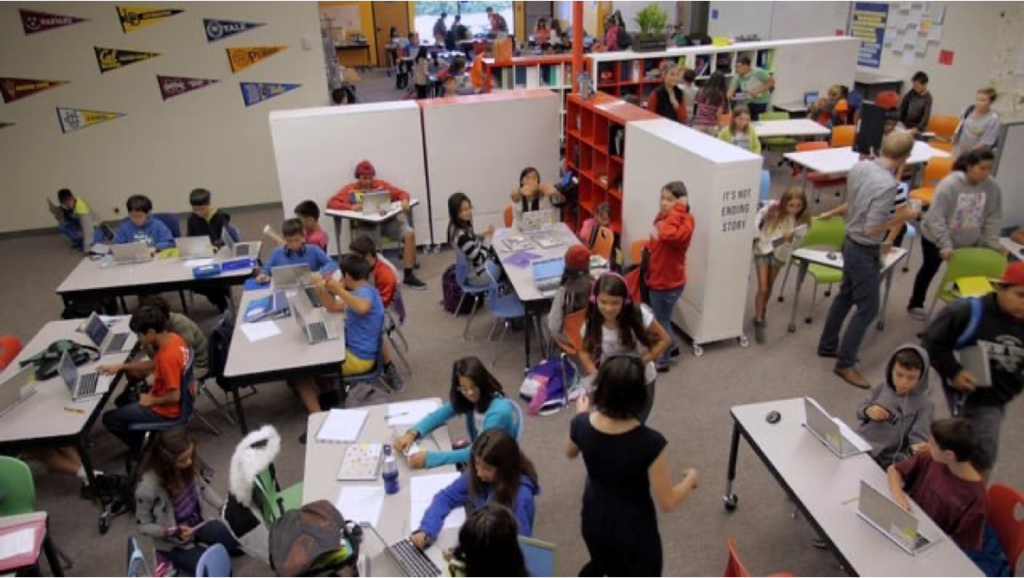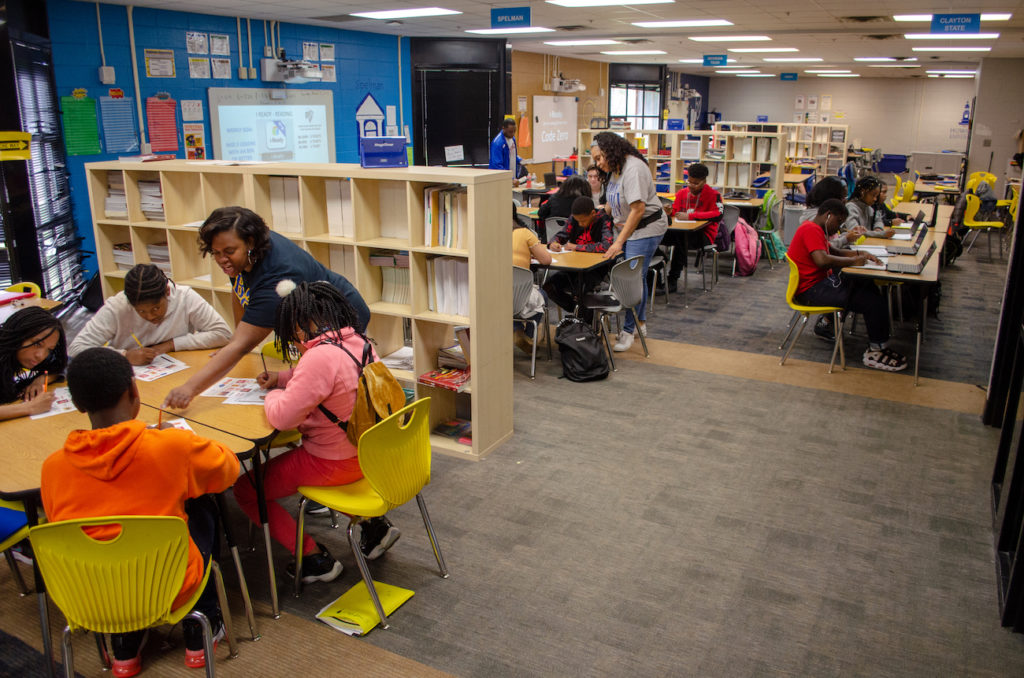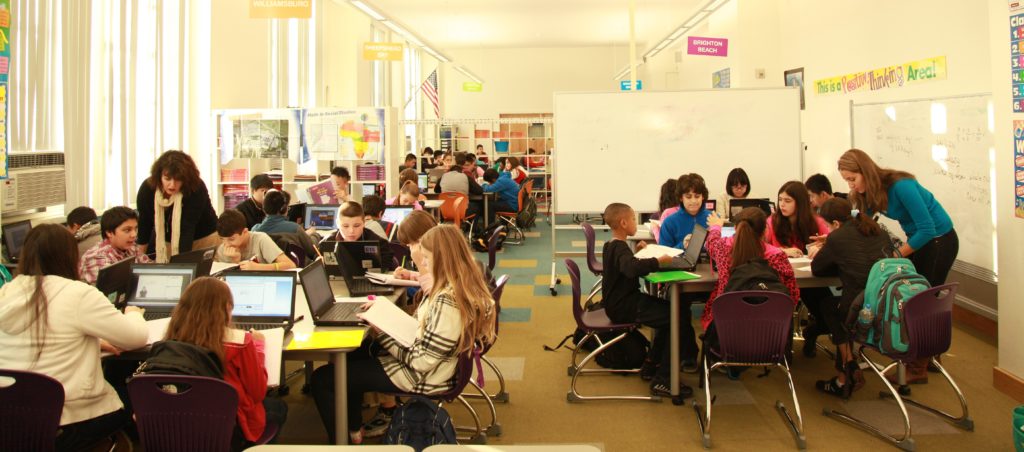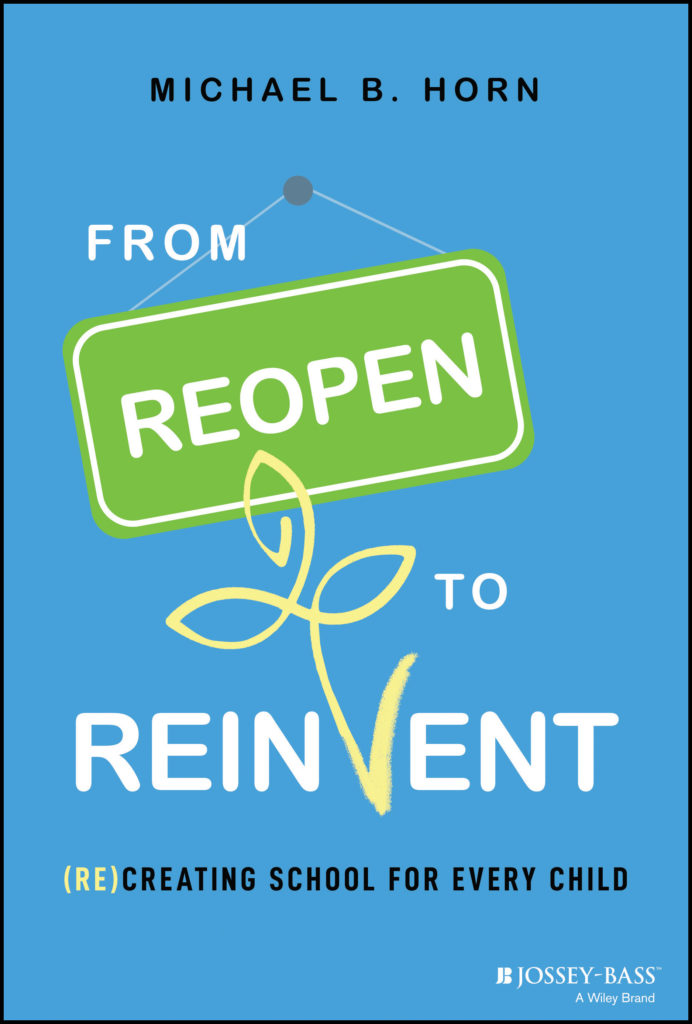As schools work to recover from the devastation and chaos of the past three school years, two things appear true that have implications for school design: to stay in the profession, many teachers will need a more supportive environment and many parents are increasingly comfortable with demanding that their preferences for their children are met.
Transform teaching
The strain on teachers has perhaps never been greater. Across 100 large urban districts, 61 have reported instruction staffing shortages, according to the Center for Reinventing Public Education. Making matters worse is a lack of substitutes and a long decline in the pipeline of new teachers.
Philadelphia was a poster child for the challenges this past school year. Twice as many of the district’s teachers resigned between December 1 and February 15 compared to the prior year. On top of that, the district struggled with a 20 percent increase in daily teacher absences.
Creating a more sustainable and gratifying teaching profession is critical. Part of the challenge is that the traditional one-to-many teacher-to-student model is broken.
But even before the pandemic, nearly 17 percent of teachers reported that they would likely leave the profession each year. Thirty percent of college graduates who become teachers typically leave the profession within six years. That ranks as the fifth-highest turnover by occupation, behind secretaries, childcare workers, paralegals, and correctional officers — and higher than policing and nursing. Creating a more sustainable and gratifying teaching profession is critical. Part of the challenge is that the traditional one-to-many teacher-to-student model is broken.

Given the near-ubiquitous technology and digital curriculum that now exists in and for schools, delivering content is not the best use of a teacher’s time. Although digital content could still benefit from improvements, dynamic delivery of content to help students build their background knowledge is no longer the scarce resource it once was.
With that in place, the teacher’s role can shift to what many education researchers argue they should be doing anyway, which is — to adapt a line from the musical Hamilton — talking less and listening more.
The problem is that even with the near-ubiquitous presence of technology and digital curriculum that can take content delivery off of a teacher’s plate, there’s still a laundry list of other things that students need and many are asking teachers to do. Among them are tutoring, mentoring, facilitating conversations and rich projects, serving as a concierge to explore different interest areas in the world, curating resources, evaluating and offering timely feedback on student work, data mining, and counseling.
Yet for a single teacher to successfully do all this work at once, they must act as a superhero — which is what we are asking many of our teachers to be today. Many ably step into that role. But creating a job in which teachers must serve as a superhero is fraught with stress and unsustainability, at best, and a path to failure for many. Asking teachers to do things for which they haven’t been trained also creates downside risks for students.
One change that could significantly help teachers is to make teaching a team sport to distribute these different crucial roles across several individuals. By team teaching, I don’t mean assigning teachers to teams but still having them remain in their separate classrooms and only meeting during collective planning periods or off-hours. Schools have done that for decades.

I’m instead referring to co-teaching in which groups of teachers actively work together as they support large groups of students. There are a variety of ways to accomplish this, but the most obvious is to create larger learning environments or combine classrooms. Once you have a larger learning environment with more teachers and students, you can allow teachers to disaggregate their roles in a variety of ways.
Imagine, for example, that in a learning environment of three or four educators, one might love geeking out on data. In this environment, she can focus on data and assessment and what to do with that data, such as creating different groupings of children or giving rapid feedback. Another might want to steer clear of data as much as possible, but love playing the role of mentor, counselor or caseworker, and facilitator. A third might want to lean in on tutoring and facilitating rigorous projects, as well as curating those projects from the surrounding community. At any given point, a different educator might step up to play the role of content expert to teach a lesson depending on what students are working on at the time. The educators may also fill a smattering of roles. But the opportunities to focus, develop one’s expertise, and create a web of support for students can alleviate the burden on any individual teacher.
From the Elizabeth Public Schools district in New Jersey where five schools have pioneered the use of Teach to One for math teaching in open spaces of roughly 3,000 square feet to Summit Public Schools and Montessori classrooms, there are many exemplars in practice today.

Parent preferences
At the same time, it’s clear that many parents are becoming more proactive around their schooling preferences for their children. The most visible and vociferous sign of this of course has been in the debates around what gets taught in schools or in the debates around masking and whether schools should be open.
But parents are also making different schooling choices. Enrollment in public schools is down. New York City’s schools have over 50,000 fewer students since the start of the pandemic, for example. Los Angeles is down 26,000 students. Meanwhile, from public charter schools to private schools, homeschooling, and microschools, numbers enrolling in alternative schools are up significantly and appear to be holding on to significant parts of their gains.
Parents have always had strong preferences for what they want for their children, but many are now acting on them. According to research by my colleagues, parents switch schools for four reasons: to overcome an obstacle, to be part of a values-aligned community, to develop a well-rounded child, of to help realize their plan for their child (with an emphasis on getting into a great college).
School systems must realize that when they proclaim one-size-fits-all, they’re really delivering a one-size-fits-none experience.
On top of that, many parents want more or fewer school hours, earlier or later school start times, longer or more flexible school calendars, and more such polar-opposite requirements. The variety of demands calls out for more personalization.
How is a district to cope? The biggest step is to dispense with the one-size-fits-all mentality that exists in schools. School systems must realize that when they proclaim one-size-fits-all, they’re really delivering a one-size-fits-none experience.
Setting up a portfolio of schools — through microschools within a given school building, much as Friendship Public Charter School is doing — or schools within schools may need to be a key tool in the future of schooling. Carving out these schools within schools can create larger umbrella communities that still serve as community centers where students from all backgrounds can be part of something bigger than themselves, but also receive the flexible attention they need.
These arrangements could have major implications for students, teachers, and parents — and the future of school design.

Read more about how to push us past being just happy to reopen to really rethinking what school does for each and every child—and to help map a path forward to getting there for school leaders given all the pressures bearing down on them from all directions. Michael Horn’s newly-released book (July 2022) From Reopen to Reinvent: (Re)Creating School for Every Child is now available. The book delivers a provocative and eye-opening call to action for the overthrow of an education system that is not working well for any of its students. Grounded in what educators should build in its place to address the challenges that stem from widespread unmet learning needs, the book walks readers through the design of a better path forward.

